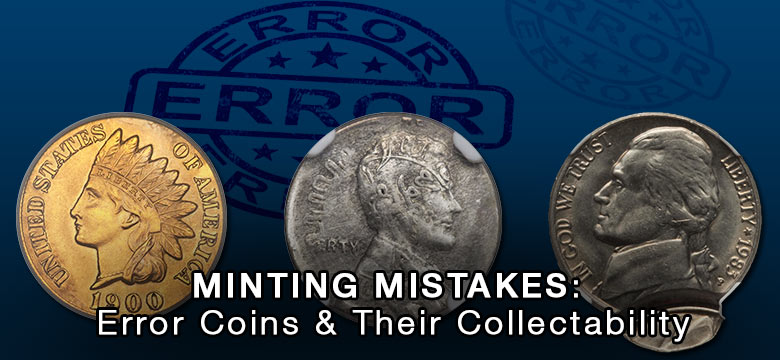A basic understanding of coin collecting reveals that condition, date, and scarcity are all key components of what makes a coin collectible. One area of collecting, however, focuses on mistakes made by the mint, or “error coins.” Even if a coin is an otherwise common year, it may be a valuable piece if simply produced incorrectly by the mint that struck it. Error coins are often pieces that are collectible not because of when or where they were produced but due to their faulty production and thus scarcity and “cool” factor. In addition, collectors have been fascinated for generations by how such coins managed to go unnoticed by any quality control verification before the botched coinage left the mint.
Although error coins are very popular with collectors and tend to be worth more than face value, the range of values for errors can vary wildly. For example, Heritage Auctions recently offered a 1983 Jefferson Nickel that had been struck twice—the second time wildly off center to the bottom—for only $69 in an internet auction. While this figure was well more than the coin’s $0.05 face value, this is actually a relatively inexpensive error.
was of an entirely different color than a normal cent. This major error sold at a Heritage sale in 2015 for the grand total of $141,000.
As seen by these two examples, errors can occur in a variety of ways. They can be struck twice or incorrectly, be struck on the wrong planchet (ie the aforementioned gold instead of copper cent), have clipped planchets that become cut during the minting process, or even be struck without the protective collar that keeps coins from spreading out like a pancake when produced. These errors are just some of the production quirks that may accidentally leave the US Mint or other coin production facilities to escape into everyday commerce and numismatists’ collections. Given the wide array of values for error coins, it makes sense to have possible error coins reviewed by an expert for evaluation. Perhaps the next time you see a strange-looking coin, it will be a scarce error that adds collectible value, so check your pocket change, your desk drawers, and more to enjoy the thrill of the hunt!
